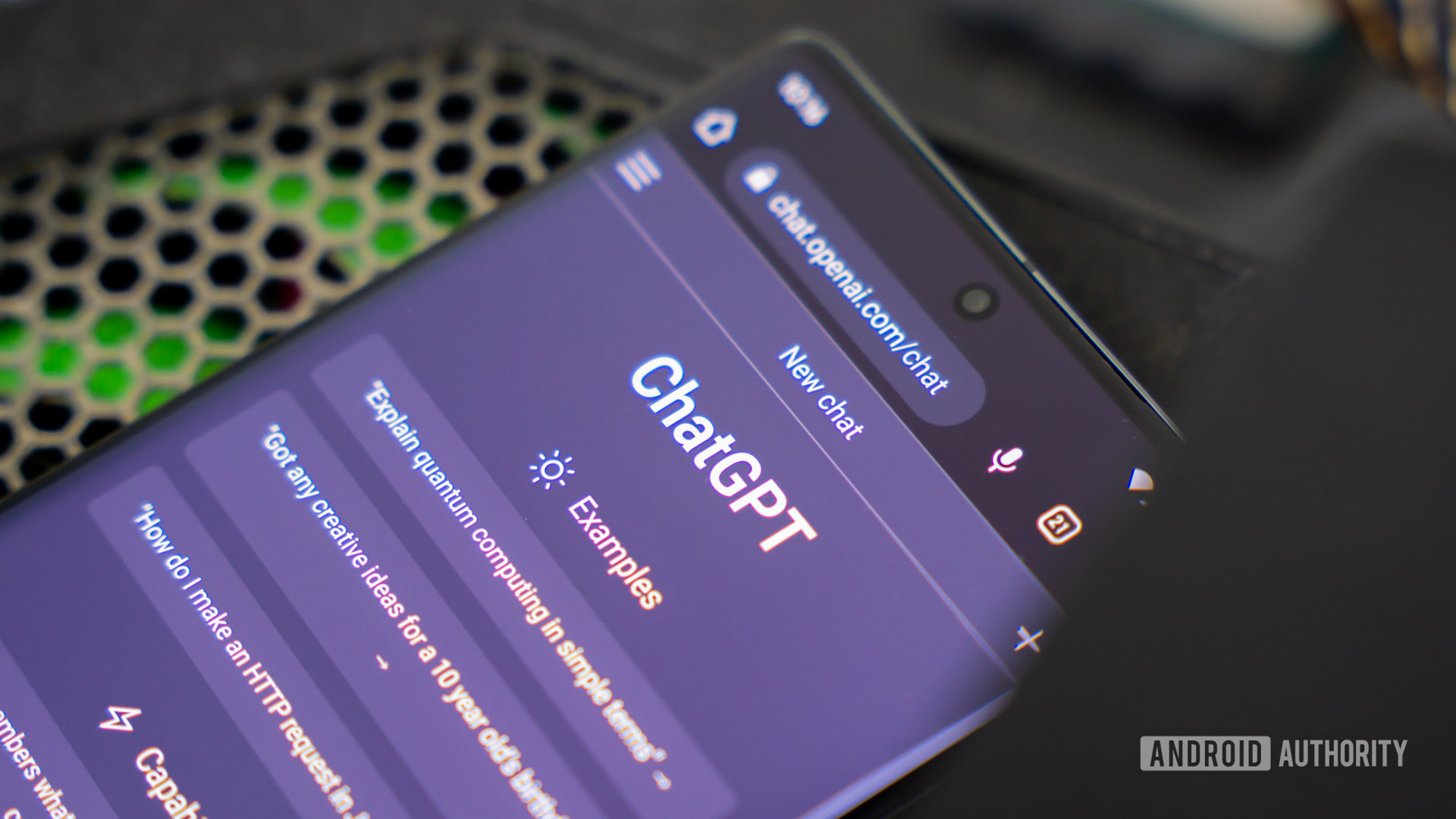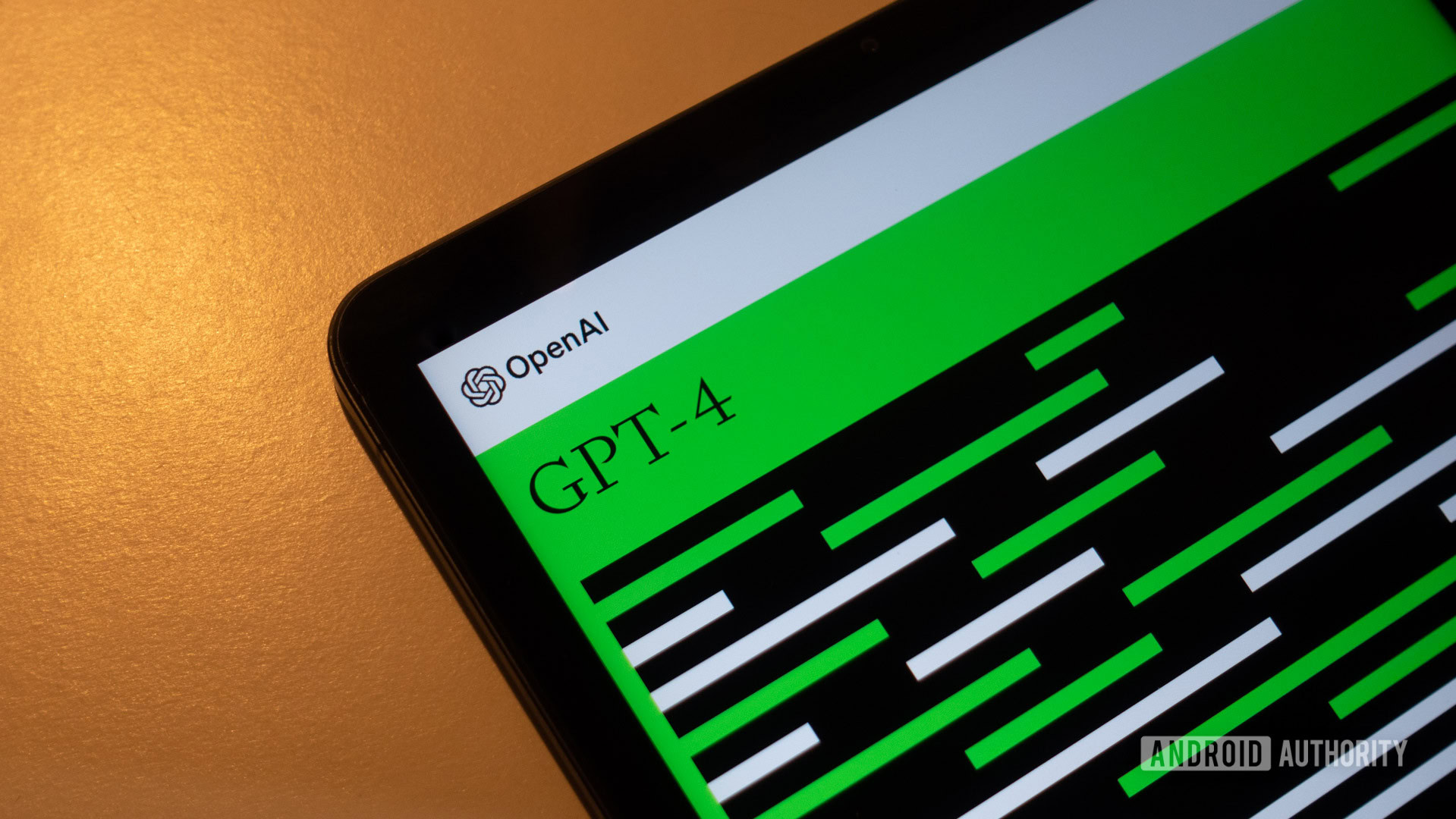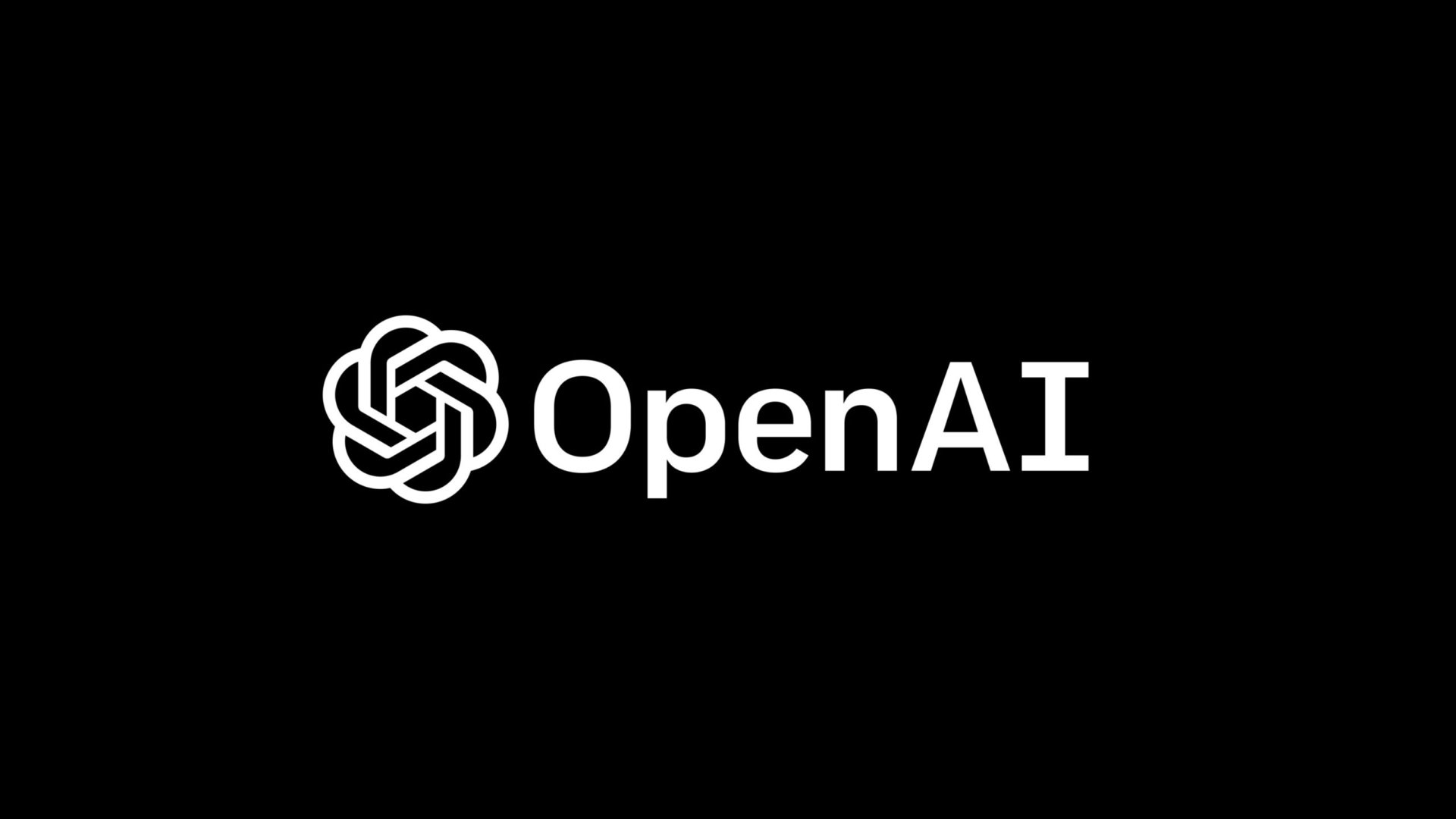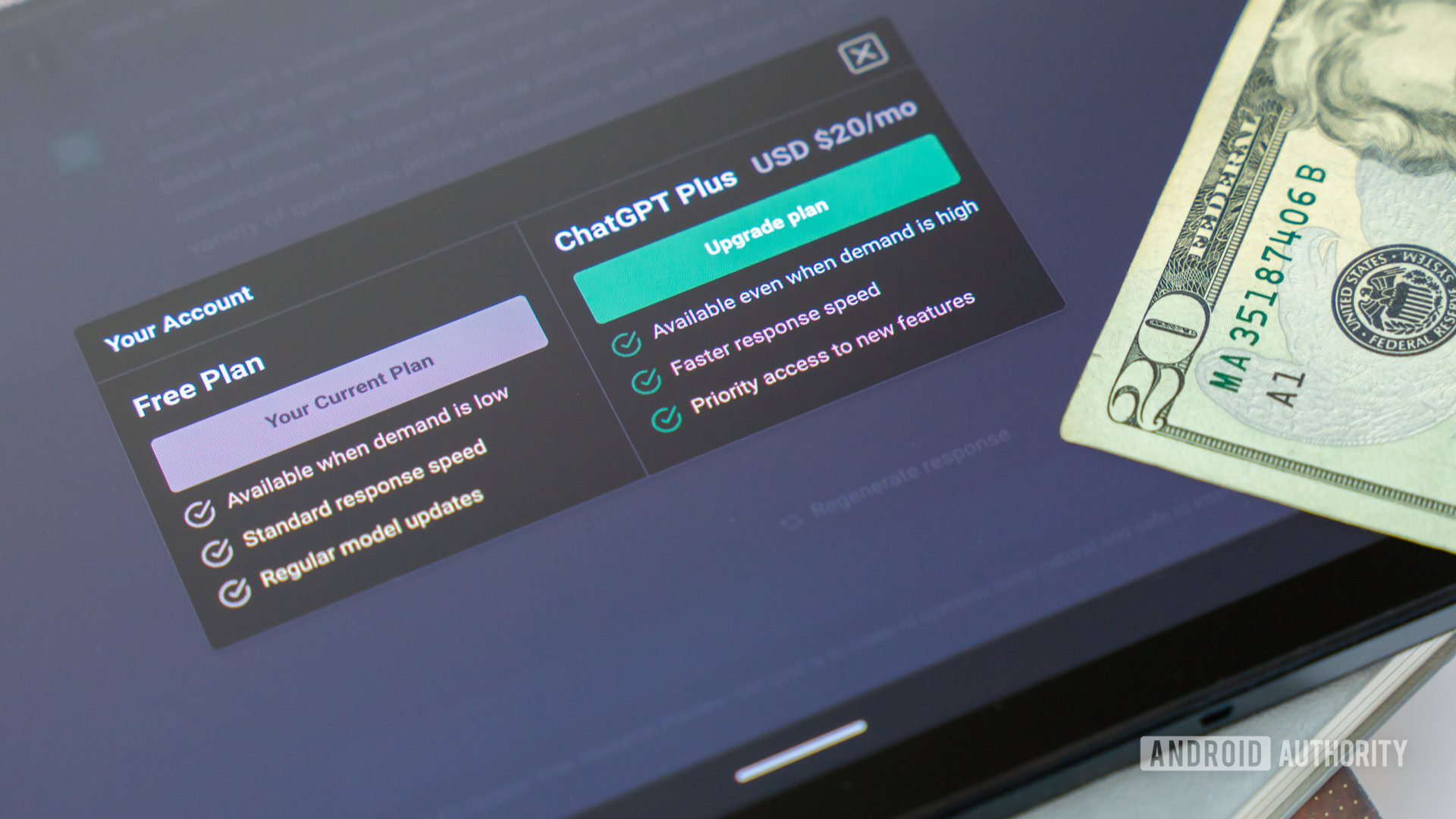
Edgar Cervantes / Android Authority
Over half a year has passed since ChatGPT first blew us away with its impressive natural language capabilities. A lot has changed since then, from Google releasing its own Bard AI chatbot to Microsoft investing a staggering $10 billion in ChatGPT’s creator OpenAI. Now, just about the entire tech industry is waiting for OpenAI to announce GPT-5, its next-generation language model. Wondering what that’s all about? We’ve rounded up all of the rumors, leaks, and speculation leading up to ChatGPT’s next major update.
The road to GPT-5: Will there be a ChatGPT 5?

Calvin Wankhede / Android Authority
Only a few months after ChatGPT’s release in late 2022, OpenAI announced its latest GPT-4 language model. GPT-4 would eventually become the most significant update to the chatbot as it introduced a host of new features and under-the-hood improvements. Until its release, ChatGPT relied on OpenAI’s GPT-3.5 language model. For context, GPT-3 debuted in 2020 and OpenAI had simply tweaked it for ChatGPT.
GPT-4 brought a few notable upgrades over previous language models in the GPT family, particularly in terms of logical reasoning. And while it still doesn’t know about events post-2021, GPT-4 has broader general knowledge and knows a lot more about the world around us. OpenAI also said the model can handle up to 25,000 words of text, allowing you to cross-examine or analyze long documents. Finally, GPT-4 gained the ability “see” through images and graphs.
GPT-4’s biggest features haven’t even reached ChatGPT yet.
But despite GPT-4’s impressive skill set, few know about it and even fewer have tried it. That’s largely because getting access to OpenAI’s latest model requires a subscription to ChatGPT Plus. At $20 per month, it’s a much higher barrier to entry than the free GPT-3.5 tier. And even then, many headlining features like image inputs aren’t available yet. Moreover, while Bing Chat does allow you to interact with GPT-4 for free, it’s not a well-known workaround even today.
Still, the steady march of AI innovation means that OpenAI hasn’t stopped with GPT-4. That’s especially true now that Google has announced its upcoming multimodal Gemini language model. That is rumored to match GPT-4, so OpenAI will have to move quickly if it wants to keep its lead.
GPT-5 release date: When will it arrive?

GPT-4’s impressive skillset and ability to mimic humans sparked fear in the tech community, prompting many to question the ethics and legality of it all. Some notable personalities, including Elon Musk and Steve Wozniak, have warned about the dangers of AI and called for a unilateral pause on training models “more advanced than GPT-4”. They also suggested tech giants step back from the AI arms race for at least six months.
In response, OpenAI announced that it had no intentions of training a successor to GPT-4. Even as recently as June 2023, the company’s CEO Sam Altman confirmed that the company wasn’t planning to train a new model for the foreseeable future. At a conference in India, Altman said, “We’re working on the new ideas that we think we need for it, but we are certainly not close to it to start.”
GPT-4 took over two years to develop, so we may not see a successor until 2025 at least.
Even though OpenAI released GPT-4 mere months after ChatGPT, we know that it took over two years to train, develop, and test. If GPT-5 follows a similar schedule, we may have to wait until 2025 for it. But that doesn’t mean we’ll be stuck with GPT-4 either — we’ll most likely see OpenAI continue to improve GPT-4 and perhaps even release a mid-cycle GPT-4.5 refresh.
It’s also worth remembering that existing language models already cost a lot of money to train and operate. GPT-4 is particularly guilty as developers have to pay $0.03-0.06 per 750 English words. The cost of GPT-3.5 Turbo, meanwhile, has dropped to just $0.0015-0.003 for the same number of words. Besides the higher cost, generating text via GPT-4 also takes quite a bit longer. These limitations could explain why OpenAI hasn’t started working on its next-gen language model yet.
GPT-5 features: How will it improve ChatGPT?

Edgar Cervantes / Android Authority
Given that GPT-5 is still potentially years away, we can only speculate what it will bring to the table. But thanks to Google and open-source AI projects, we have a pretty good idea about where the industry’s headed next. Here are some of the most anticipated improvements that GPT-5 or ChatGPT 5 will bring to the table:
- Multimodal capabilities: GPT-4 can already handle image and text inputs, but we’re still waiting on audio and video modalities. We’ve already seen Google start to experiment with multimodal AI to develop offshoot versions of its PaLM 2 language model for medical applications. It’s only a matter of time before competition forces OpenAI to innovate as well.
- More truthful: A next-generation language model like GPT-5 could increase its training dataset size and variety. Even though GPT-4 fares better than its predecessors, it doesn’t know a lot about obscure scientific concepts and lesser-known subjects. And in the absence of knowledge, large language models tend to hallucinate or respond with made-up information.
- Artificial general intelligence (AGI): Imagine if you could assign menial tasks or jobs to AI. That could become a reality with GPT-5 if OpenAI continues to work on integrations with third-party services. For example, you could ask an autonomous agent to buy groceries based on your budget and dietary preferences. It would automatically search the internet for recipes, shop for the required ingredients, and have them delivered to you. This would bring us one step closer to artificial general intelligence (AGI).
Finally, GPT-5’s release could mean that GPT-4 will become accessible and cheaper to use. As I mentioned earlier, GPT-4’s high cost has turned away many potential users. Once it becomes cheaper and more widely accessible, though, ChatGPT could become a lot more proficient at complex tasks like coding, translation, and research.
FAQs
No, at least not yet. GPT-5 is coming at some point in the future but OpenAI hasn’t started training a successor to GPT-4 yet. We may also see improvements to the latter before a brand-new language model.
Since GPT-5 still hasn’t entered its training phase, we have very little information about it. Some speculate that it might introduce support for multimodal input such as audio and video as well as autonomous agents that can perform certain mundane tasks.
No, GPT-5 likely won’t be classified as an AGI. Even though some researchers claimed that the current-generation GPT-4 shows “sparks of AGI”, we’re still a long way from true artificial general intelligence.



